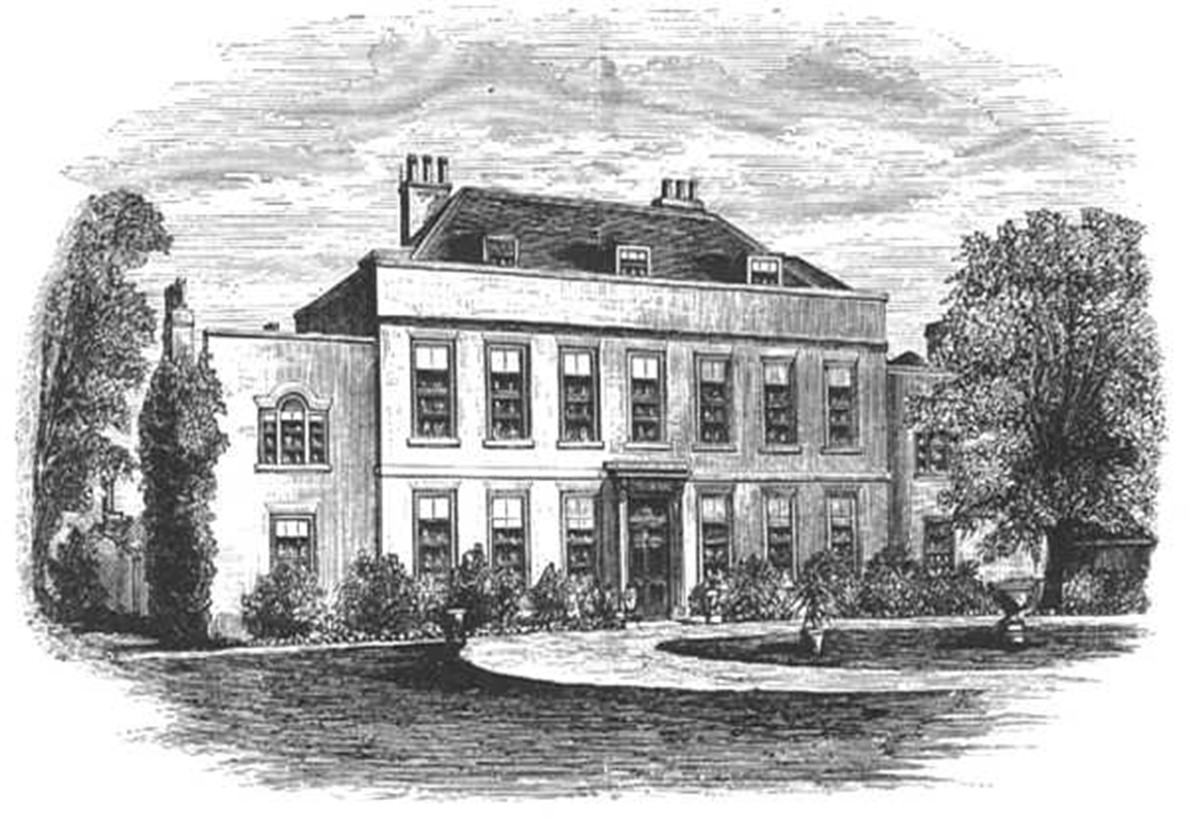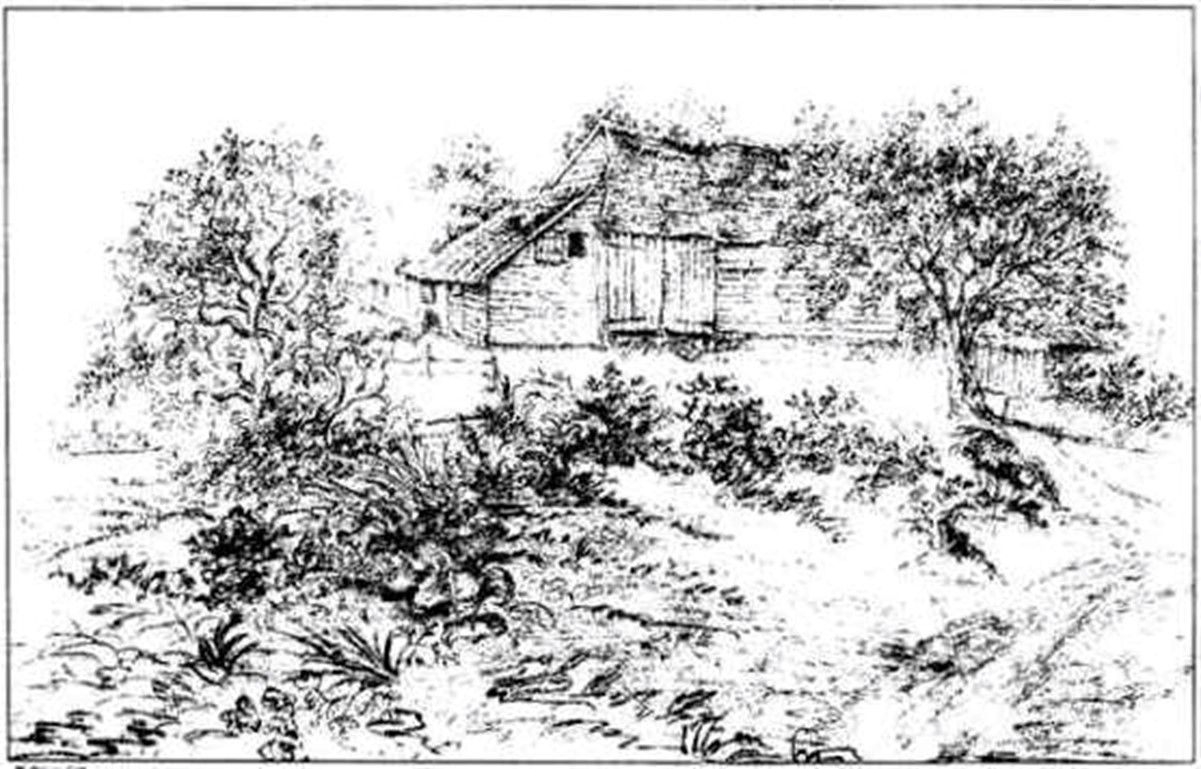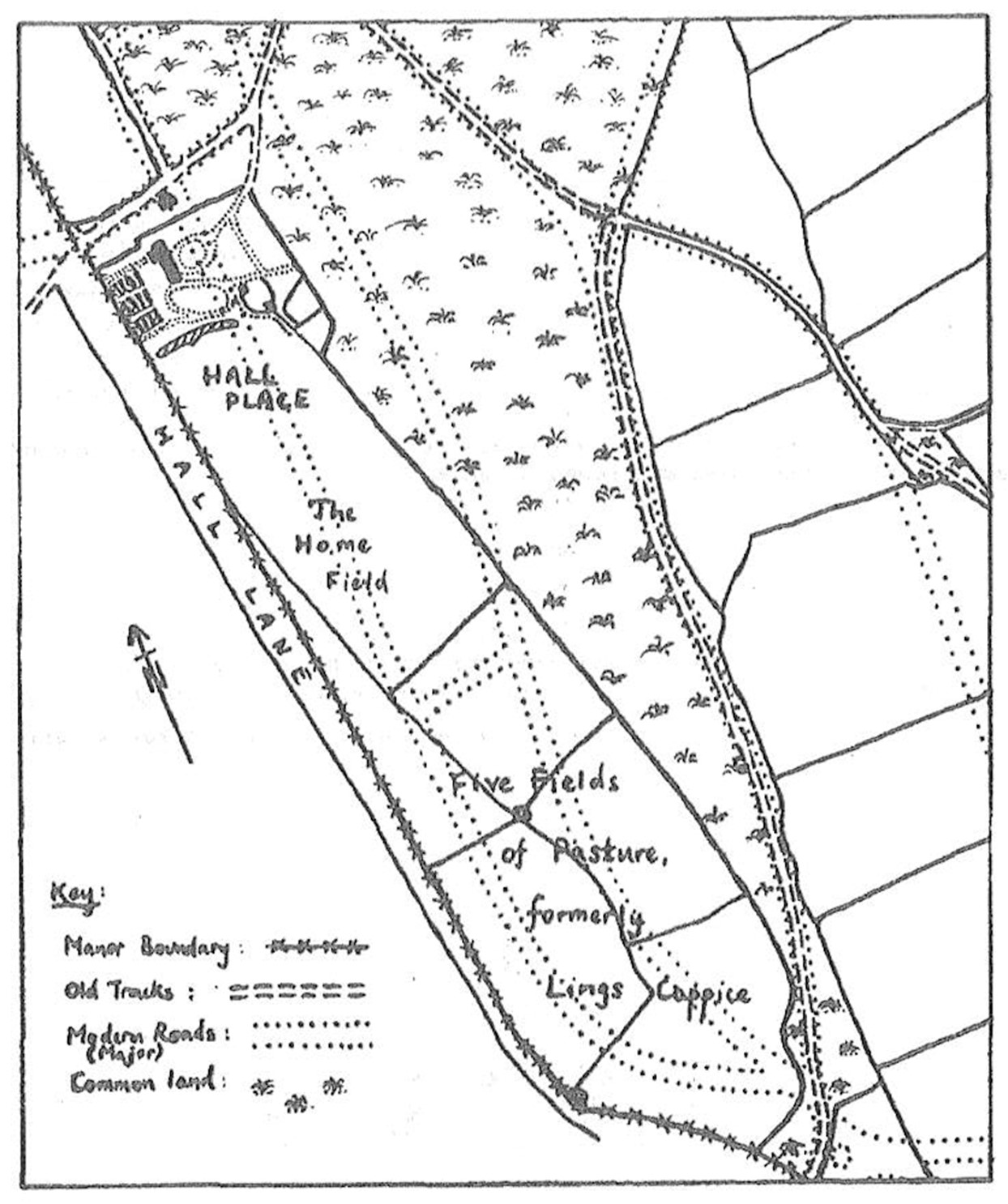Home » My Articles » Where was the Manor House
Where was the Manor House


WHERE WAS THE MANOR HOUSE?
Not, perhaps a question which is likely to have vexed the minds of many of you, but in this article, to be followed by two others on Hall Place and Dulwich Court respectively, I shall be dealing with the early history of these two houses, each of which was at one time or another described as the manor house, and both of which have an important place in the history of Dulwich. Some of what follows may seem rather sketchy, and overly concerned with legal documents such as leases rather than with how our predecessors actually lived, but that is because almost all our knowledge of this early period comes from such documents. How-ever, I hope that you will bear with me, as it forms a necessary prelude to the later history, for which the evidence is more abundant and, dare I say it, more interesting.
Readers of my father's book 'Dulwich Discovered’ (W.Darby, 1966) will recall a discussion of the relative claims of Hall Place and Dulwich Court to the title of manor house of Dul-wich. His tentative conclusion was that Dulwich Court, the site of which was well known (roughly where the Court Lane entrance to Dulwich Park now stands), was the manor house, and that in Edward Alleyn's time Hall Place was adjacent to or directly opposite it, although the name was later applied to a mansion in Park Hall Road. Recently, however, I came across a map of the adjoining manor of Levehurst, in West Norwood, dated 1563, the original of which is in the Public Record Office. On the eastern fringe of this map, by a stroke of luck, Hall Place is clearly indicated at the north end of what is now South Croxted Road, so that, contrary to what my father supposed, there was no transfer of the name 'Hall Place' between different houses during the next two centuries.
Why, though, were both Hall Place and Dulwich Court referred to at different times as the manor house? The answer, I think, can be traced to a lease granted in 1530 by Bermondsey Abbey to John Scott of Camberwell. This lease, for a term of 50 years, was of all the lands
comprised in the manor of Dulwich, but specifically excluded the Dulwich woods, the "fynes and amerciamentes of the Lawe Dayes and Courtes" held in the manor, and "a Manor or Tenement called Knowlys". Since later documents refer to "Hall place alias Knowlis", identification is certain, and the obvious conclusion is that the Abbey, wishing to reserve to itself the numerous 'perks' due to it as lord of the manor, needed to retain a house in which to hold its twice-yearly courts at which these were exacted, and that house was Hall Place. How- ever, the Scott family would have required a mansion in Dulwich befitting their station in life, and that would have been Dulwich Court. This is confirmed by a sub-lease by John Scott's son to John and Walter Dove, in 1561, of "the manor house of Dulwich", with 129 acres adjoining, which was assigned to John Levar, a London fishmonger, in 1573, and which Edward Alleyn himself later referred to as relating to Dulwich Court. In that same year of 1573 John Scott's five grandsons, to whom the 1530 lease had passed, assigned it to Levar, who thus came into possession of the whole manor (apart from Hall Place and the Woods), and would have regarded Dulwich Court as his manor house, although strictly speaking it wasn't.
To back-track a little, you may have noticed that the 1530 lease referred to "a Manor or Tenement called Knowlys", rather than to 'a Manor House ...". This is in itself quite intri-guing, implying that Knowlys was a manor within a manor, and some early documents in the Public Record Office, referring to disputes in 1433 and 1449 over the manor of Knolles, held at the will of the Abbot of Bermondsey, seem to bear this out. Sir Robert Knolles, from whom it took its name, was a Dulwich tenant prior to 1393. The Last Will of Thomas Henley junior, who died in 1544, refers to "my farme called knowls" and other lands within the lordship of Dulwich. It is to the subsequent story of 'Knowlys' or, as it soon became more generally known, 'Hall Place', that I shall devote my next article.
[First published in Dulwich Society Newsletter No. 49, July 1980]
HALL PLACE
When Francis Calton (from whom Edward Alleyn later purchased Dulwich manor) leased Hall Place to John Bone, a Camberwell yeoman, in 1597, the farm (for that is what it was) comprised 45 acres, extending north to include lands which are now part of 'Belair'. How-ever, it soon afterwards lost its agricultural character, and became a country residence for London merchants or professional men who didn't need to farm it commercially. Such tenants included William Lawton at £8 a year (1619), Nicholas Thurman (1662), Mary Lynn (1738, widow of Capt. Francis Lynn who was killed in a duel[1]), and Jeremiah Joye at £40 a year (1755).
The 'Messuage or Mansion House' referred to in their leases, with the adjoining garden, out-buildings, and surrounding moat, contained two acres, and a 6-acre pasture lay immediately to the south. South of that were four (later reconstituted as five) more pastures measuring about 21 acres, formerly Lings Coppice, which were included in leases of the premises after 1633. The accompanying plan shows the estate in 1806, with modern roads indicated by dotted lines. The northern tip of the almost triangular field on the west is still visible on large-scale maps as a 'kink' in the rear boundary line of the gardens on the west side of South Croxted Road.
Jeremiah Joye's lease was sold by auction at the New York Coffee House in London in 1767, and when the auctioneer declared that the lease was perpetually renewable the Master of the College, who was present, did not bother to contradict him. William Kay, a wealthy lawyer, who bought it from the successful bidder, spent £2,200 in rebuilding or renovating Hall Place in brick, and making a new road (now Park Hall Road and Alleyn Park) linking the premises to Back Lane (now Gallery Road). By 1773, however, Kay's patience had become exhausted by the College's failure to take action against a Mr Waring, whose carts constantly rendered his new road impassable, and by a prolonged dispute over the terms of a new lease, and he put the property up for auction at Christie's. Despite the auctioneer's 'puff' ("perfectly retired and free from Noise, Dust or the inconvenience of adjoining neighbours. The encircling vicinage genteel, the prospects diversified with distant Hills, rising Woods and Verdant Fields...."), any chance of the premises being sold was effectively scotched by the Master, who again was present, and this time publicly declared that not only was the College not obliged to renew the lease, but it might increase the rent to allow for the outgoing tenant's improvements. Kay continued as tenant, although his relations with the College didn't improve, and in 1788 he was obliged to apologise for certain remarks he had made about the College in a letter to the Archbishop of Canterbury before a new lease could be granted to him.
Later lessees included Charles Temple, Q.C. (1842) and Frederick Doulton, M.P., who renamed Hall Place 'The Manor House' (1860). In 'Ye Parish of Camberwell (1875), Blanch gives an eloquent tribute to the old house (although it must be said, regretfully, that there is no evidence for his assertion that Edward Alleyn once lived at the property). Little could he have known that a mere seven years later the house would be no more, demolished for building purposes by Doulton's assignee, a Mr Westwood. Nowadays we would have little sympathy for such destruction, but some good did come of it, for by 1890 the Hall Place estate had been parcelled up into building plots, now comprising Alleyn Road and South Croxted Road.

[First published in Dulwich Society Newsletter No. 50, October 1980]
[1] This was an error, based on statements by several previous writers on Dulwich history. Mr (not Captain) Francis Lynn died from natural causes (and not in a duel) in April 1731.